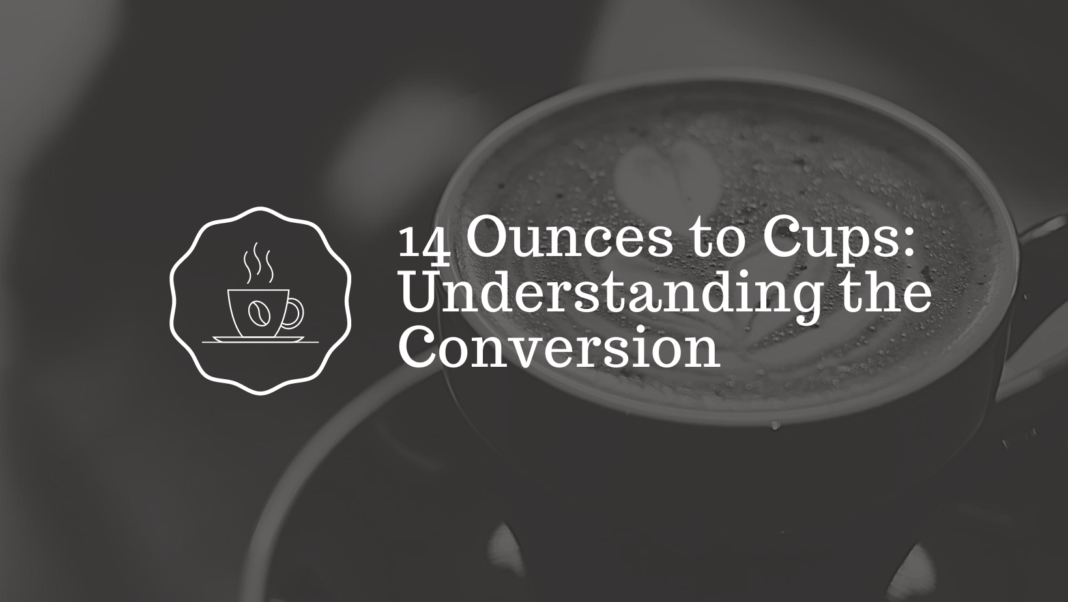When it comes to cooking and baking, precise measurements can make or break a recipe. One common conversion you might encounter is from ounces to cups. If you’re dealing with a measurement of 14 ounces and need to convert it into cups, this article will guide you through the process, explore why conversions matter, and answer some frequently asked questions.
The Basics of Measurement Conversion
To convert ounces to cups, you first need to know the context of the measurement. In the kitchen, ounces can refer to fluid ounces or ounces by weight. Fluid ounces measure volume, while ounces by weight measure mass. For this article, we’ll focus on fluid ounces, which is more relevant to recipes and kitchen measurements.
Converting 14 Ounces to Cups
In the United States, the standard conversion for fluid ounces to cups is as follows:
– 1 cup = 8 fluid ounces.
To convert 14 fluid ounces to cups:
1. Divide the number of fluid ounces by the number of fluid ounces per cup:
\text{Cups} = \frac{14 \text{ fluid ounces}}{8 \text{ fluid ounces per cup}} = 1.75 \text{ cups}
\]
So, 14 fluid ounces is equivalent to 1.75 cups.
Why Accurate Conversions Matter
Accurate conversions are crucial for several reasons:
1. Recipe Precision: Many recipes require exact measurements for ingredients to ensure the final product turns out as intended.
2. Consistency: Consistent measurements ensure that dishes come out the same every time you make them.
3. Nutritional Information: Accurate measurements are essential for determining the nutritional content of a recipe, which is important for dietary needs.
Measuring Tips and Tools
When measuring liquids, use a liquid measuring cup, which has a spout and clear markings for accuracy. For measuring dry ingredients, a dry measuring cup is more suitable, though conversions from weight to volume can vary based on ingredient density.
Frequently Asked Questions
1. What if I only have a dry measuring cup? Can I use it for liquid measurements?
Yes, you can use a dry measuring cup for liquid measurements, but it’s not ideal. Liquid measuring cups are designed with a spout and are marked to help measure precise volumes. If you use a dry measuring cup, make sure to fill it to the exact measurement line and check for any discrepancies.
2. How do I convert ounces by weight to cups?
The conversion from ounces by weight to cups varies based on the ingredient’s density. For example, 1 cup of flour weighs about 4.5 ounces, while 1 cup of sugar weighs about 7 ounces. To convert, you need to know the density of the ingredient or consult a conversion chart specific to that ingredient.
3. What if my recipe calls for 14 ounces of a dry ingredient?
For dry ingredients, converting weight to volume involves knowing the ingredient’s density. Generally, 14 ounces of flour might be around 3.1 cups, but it’s best to use a kitchen scale for accuracy.
4. Can I use a smartphone app for conversions?
Yes, many smartphone apps can perform conversions quickly and accurately. However, always double-check the results, especially when it comes to critical measurements in baking or cooking.
5. Are there any common errors to avoid when converting measurements?
One common error is misinterpreting fluid ounces for ounces by weight. Ensure you’re working with the correct measurement type. Another mistake is not leveling off dry ingredients, which can lead to inaccurate measurements.
Conclusion
Converting 14 liquid ounces over completely to cups brings about 1.75 cups. Exact transformations are fundamental for fruitful cooking and baking, guaranteeing consistency and accuracy. Whether you’re utilizing a recipe or changing estimations, understanding how to change over between units will assist you with accomplishing improved brings about the kitchen.
FAQ: Converting 14 Ounces to Cups and Related Queries
1. What is the conversion of 14 fluid ounces to cups?
14 fluid ounces is equivalent to 1.75 cups. This is based on the standard conversion where 1 cup equals 8 fluid ounces.
2. How do I convert 14 ounces of a dry ingredient to cups?
The conversion from ounces to cups for dry ingredients depends on the ingredient’s density. For instance, 14 ounces of flour is roughly 3.1 cups, while 14 ounces of sugar is approximately 2 cups. It’s best to use a kitchen scale for the most accurate measurements for dry ingredients.
3. Can I use a dry measuring cup for liquid measurements?
While you can use a dry measuring cup for liquids, it’s not recommended. Liquid measuring cups are designed with a spout and are marked for fluid measurements, which helps ensure accuracy. Dry measuring cups are meant for solid or semi-solid ingredients and may not provide precise measurements for liquids.
4. How do I measure 14 ounces of liquid without a measuring cup?
If you don’t have a liquid measuring cup, you can use other common kitchen utensils for approximation. For example, 14 fluid ounces is equivalent to 1.75 cups. You can measure this by using a 1-cup measure and a 0.75-cup measure or by using tablespoons (since 1 cup is 16 tablespoons, 1.75 cups is 28 tablespoons).
5. What is the difference between fluid ounces and ounces by weight?
Fluid ounces measure volume, while ounces by weight measure mass. Fluid ounces are used for liquids, and the conversion to cups is straightforward (8 fluid ounces per cup). Ounces by weight vary by ingredient; for example, 1 cup of flour weighs about 4.5 ounces, but 1 cup of sugar weighs about 7 ounces.
6. Why is accurate measurement important in cooking and baking?
Accurate measurements are crucial because they ensure that the recipe’s balance of ingredients is correct, which affects taste, texture, and consistency. In baking, precision is especially important since the chemical reactions between ingredients depend on exact proportions.
7. Are there apps or tools to help with measurement conversions?
Yes, there are many smartphone apps and online tools available that can assist with measurement conversions. These tools are convenient but always verify with a trusted source, especially for critical measurements.
8. How can I convert ounces to cups if I don’t have a conversion chart
To convert ounces to cups manually, divide the number of fluid ounces by 8 (since 1 cup equals 8 fluid ounces). For example, 14 fluid ounces divided by 8 equals 1.75 cups. This method works for liquid measurements but requires a different approach for dry ingredients.
9. What if my recipe calls for 14 ounces of a specific ingredient and I only have a scale?
If you have a kitchen scale, weigh the ingredient directly for accuracy. For dry ingredients, look up their weight-to-volume conversion rates if you need to convert between weight and volume.
10. Can I use a conversion chart for different ingredients?
Yes, conversion charts for different ingredients can be very helpful. They provide specific conversion rates based on ingredient density. However, always double-check as different brands and types of ingredients can vary in weight.



